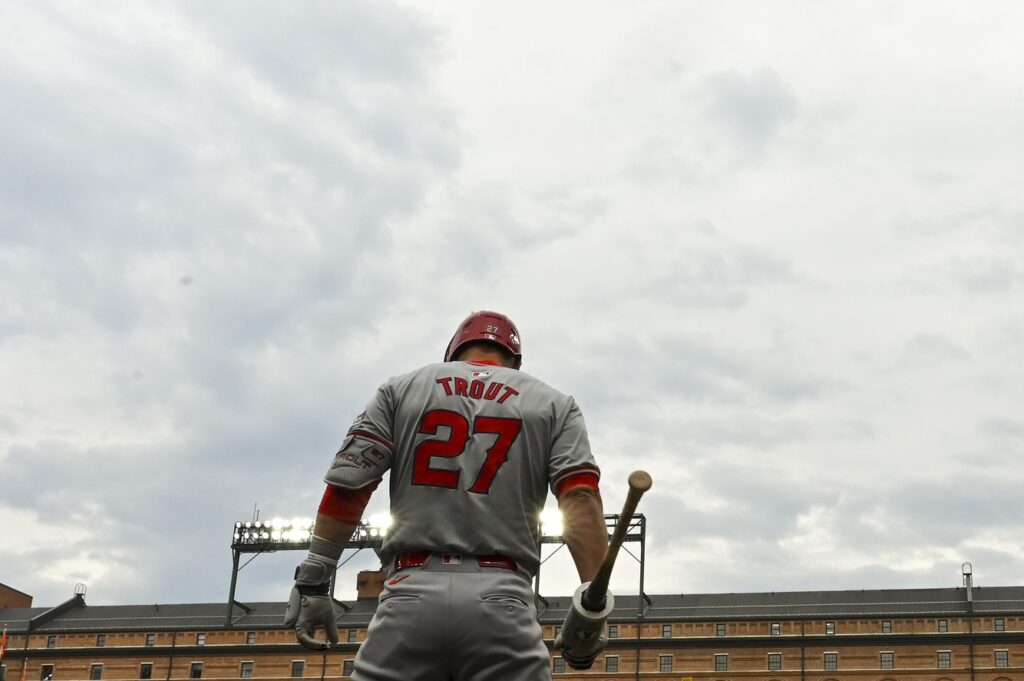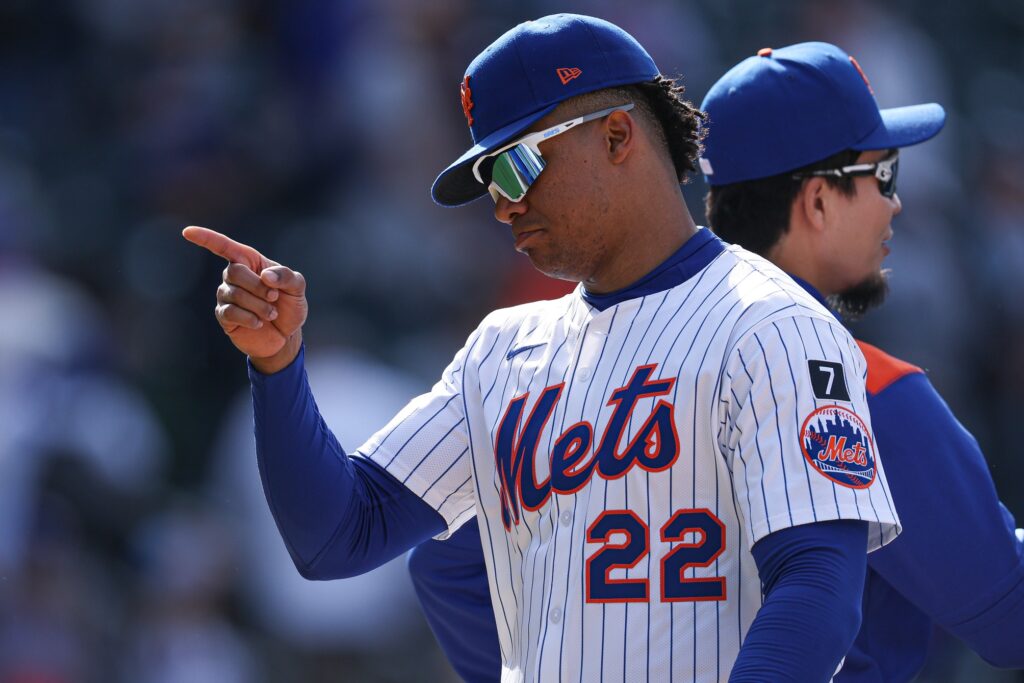It’s 2024 and Mike Trout‘s still got it. The 32-year-old centerfielder and Los Angeles Angels superstar is undoubtedly the greatest player of his generation but he has lost his status as the game’s best player in recent years. His 30s have been injury-riddled thus far but he’s still put up elite production when healthy.
The three-time MVP is already a slam-dunk first-ballot Hall of Famer but the Angels still have him under contract for seven more seasons, plenty of time to cement himself as one of the best who ever played. While his run of unprecedented dominance is over, Trout still has greatness in him and can still put up elite numbers and even challenge for a fourth MVP award.
Three Reasons Mike Trout Is Still Among The Game’s Elite
The Performance is Still Elite
From his rookie year in 2012 through 2019, Mike Trout put together one of the greatest stretches of any player ever. He finished top five in MVP voting every year, winning three times and finishing second another four times. He had a legitimate case to win MVP every season except when he missed over a month in 2017 (when he finished a mere fourth). From 2012 to 2019 his fWAR only fell below 8.3 once (6.4 in 2017) and his wRC+ never fell below 167, good for seven of the 13 best seasons by any player in fWAR and six of the top 11 seasons in wRC+ over that stretch. Due to mounting injury troubles since then, his volume has been curtailed but the rate stats have remained astronomical.
From 2020-2024 the 11-time all-star has put up 160, 189, 176, and 134 wRC+ figures each year. That’s an average of around 165, only slightly down from his career norms, and still good enough to win an MVP award. The only season in this stretch he didn’t battle injuries was the shortened 2020 season in which he played 53 out of 60 games and finished fifth in MVP balloting, followed by a 2021 campaign in which he got off to a career-best start but only managed to play 36 games. That was followed by a 2022 season where he put up a 6.0 fWAR and became just the fourth player to hit 40 home runs in a season while playing under 120 games. He won his ninth Silver Slugger award and finished eighth in MVP voting.
Last season was the first sign of even a slight performance dip, in 82 games he put up just a 3.0 fWAR and 134 wRC+, still good enough to be an all-star but near the stratospheric heights we are accustomed to seeing. It was also the first time his 600 plate appearance fWAR pace fell below 6.2. Much of that production decline though can be accredited to the former AL Rookie of the Year playing through lingering injuries which he seems to have recovered from in the offseason. Overall, his performance is not the problem, if he’s healthy Trout is as good if not better than any of the young stars who have come up in recent years and he is proving that in the early going, just look at where this rocket landed.
The Talent is Still Elite
In arguably his best season in 2016, Trout was in the 90th percentile or better in expected wOBA and slugging, barrel rate, and chase rate. In 2023, the worst offensive season of his career, Trout was in the 90th percentile or better in all those same categories in addition to hard-hit rate and sweet spot rate. He hasn’t experienced any physical decline with his bat, and the same goes for his glove. His last three seasons are three of his top four best seasons by Outs Above Average (OAA) and he hasn’t finished in the negative since 2019 despite his declining arm strength.
Part of what made Trout great when he first came up was his baserunning, stealing 49 bags in his rookie year and while he doesn’t run as often anymore he still has elite speed. His sprint speed has remained constant since the stat began tracking in 2015, with his last two seasons being marginally his fastest since 2017. He is still one of the most athletic players in the game, never finishing worse than the 94th percentile in sprint speed and 91st percentile in exit velocity. Since 2017 he has jumped from the 17th to the 85th percentile in OAA and the 74th to the 95th percentile in hard hit rate. As he enters his 30s he hits the ball as hard and runs as fast as he ever has while dramatically improving his defense, that is a great way to once again become one of the most valuable players in baseball.
Even though he is almost as athletic as he used to be age has still affected him to some degree. As he’s gotten older he’s gotten much stronger and relies much more on home run power than he used to produce at the same level. With this change Trout has done what all great athletes do, he’s changed his approach and adapted to his new skillsets. Since 2020 his flyball rate has been slowly increasing, topping out at 56.7% in 2022 and he looks to be emphasizing that in the early going of 2024, with a staggering 75% rate thus far. As well, his home runs per flyball (HR/FB) have also increased, now hovering between 20 and 30 percent over the last few years. He’s added more swing and miss to his game to best utilize his power but he is still a very well-rounded player but has made the necessary changes to best use his skills and become one of the best power hitters in the game.
The Process is Still Elite
One of the hallmarks of Trout’s greatness at the plate has been his elite approach. He has perennially been at the top of walk leaderboards and grades out very well in almost every plate discipline metric. In 2023 he was in the 88th percentile in walk rate, down from his career peaks but still in the upper echelon of the game. As well, his chase rate remains great as he sat in the 92nd percentile last year. One of the most impressive features of Trout’s recent approach has been how he’s attacked the zone. His top three seasons in in-zone swing percentage are his last three seasons, topping out at 72.5% last year. What makes this even more impressive is the fact that he is seeing fewer pitches in the zone than ever before, falling as low as 41.1% in 2022. Trout has always been a disciplined hitter, but this newfound aggressiveness will give him a chance to do even more damage with the hittable pitches he sees.
This approach of disciplined aggressiveness has been the foundation of many of the greatest offensive careers in baseball history. If he can maintain this approach through his mid-30s his physical tools could decline and he would still be an offensive force in Anaheim. If he can bring his walk rate up closer to his career best, something that would likely come from better performance in other areas, he could produce at an extremely impressive level, even by his historically lofty standards. Overall, his approach is a big part of what has made him so great and will be the reason he can stay elite until the end of his Hall of Fame career.
Mike Trout has put together a career of nearly unprecedented greatness, producing one of the great eight-year peaks in baseball history. He cemented himself as the best player of his generation and for the reasons above could become one of the best players of this new generation as well. Trout is in the middle of a 10-way tie for second all-time with three MVP awards behind Barry Bonds but all it takes is one more vintage “Mike Trout” to take solo second and a fourth MVP crown. While it may seem like his peak is over, there is still a lot more greatness in the tank for Mike Trout.
Main Image: Tommy Gilligan-USA TODAY Sports



